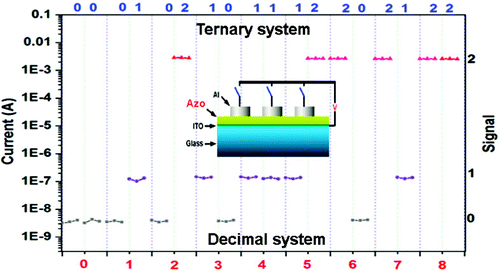Original URL: https://www.theregister.com/2010/04/16/ternary_memory/
Chinese go beyond binary with ternary molecule
Memory sandwich molecule munches three bits
Posted in Personal Tech, 16th April 2010 09:22 GMT
Scientists in Singapore and Taiwan have developed an organic molecule which can have three electrically-readable states, making a ternary rather than binary device possible.
Binary devices have two electrically readable states, corresponding to a one or zero. Ternary devices have three: zero, one or two. Consequently they could, if built and programmed, store or process more information than binary RAM or NAND.

The scientists built a prototype device which functioned as a plastic DRAM cell. It was composed of a new synthesised organic azo compound sandwiched between aluminum and indium tin oxide (ITO) electrodes. Azo compounds may have vivid yellow, orange and red colours, and are used in dyes.
According to a American Chemical Society journal abstract the proto cell was "based on a donor-functionalized polyimide (TP6F-PI), which exhibited the ability to write, read, erase, and refresh the electrical states. The device had an ON/OFF current ratio up to 105, promising minimal misreading error. Both the on and off states were stable under a constant voltage stress of 1 V and survived up to 108 read cycles at 1 V."
The azo compound exhibits a high, medium or low conductivity state depending on the voltage applied to it through the aluminium electrodes and these three states can be read out as 0, 1 or 2. The abstract says: "Two electron pull groups and one electron push group are identified as the species responsible for electron flow."
It's very interesting science, but the entire binary computing infrastructure would have to alter to use it. Don't expect a ternary iPad in your lifetime. Sorry! ®